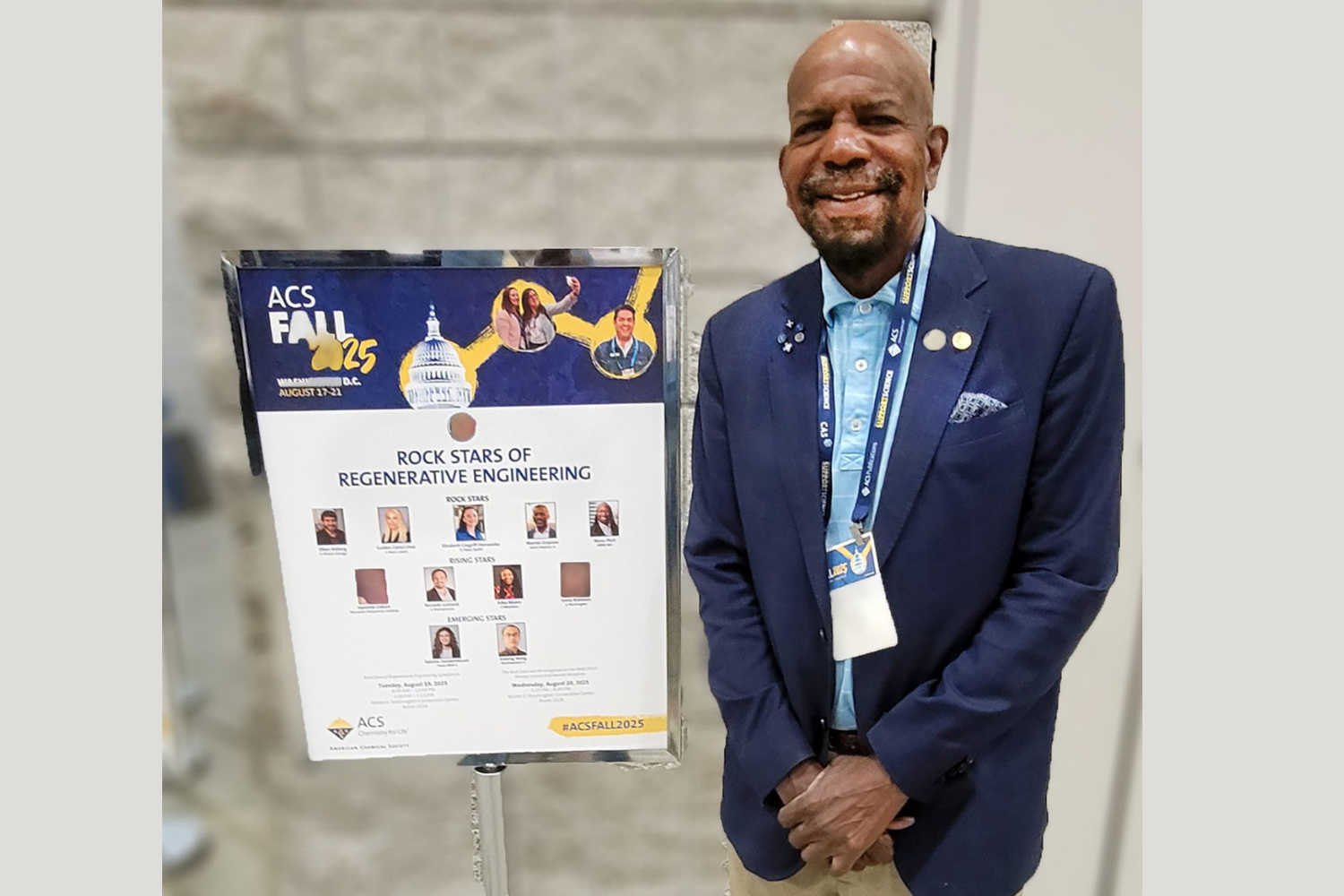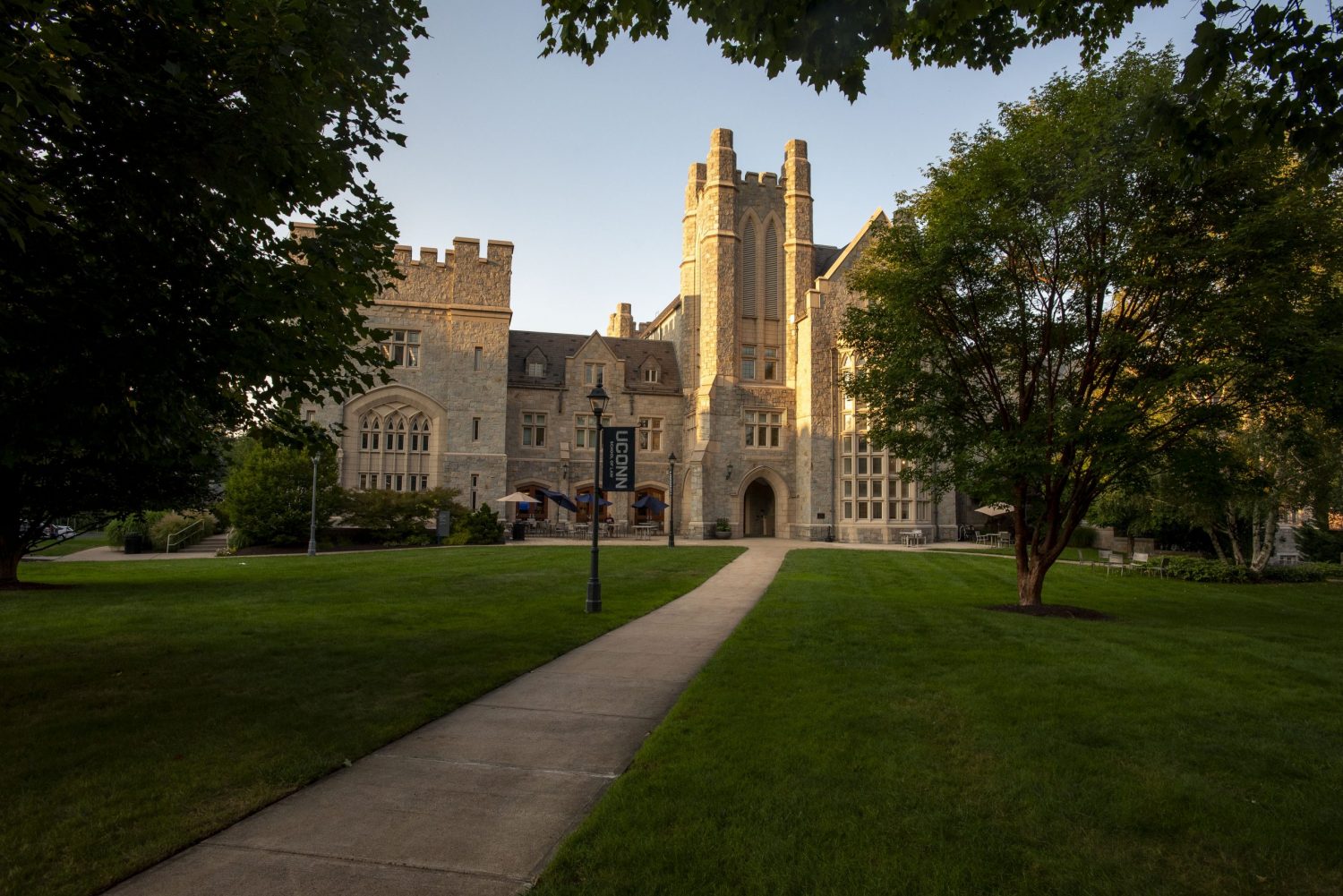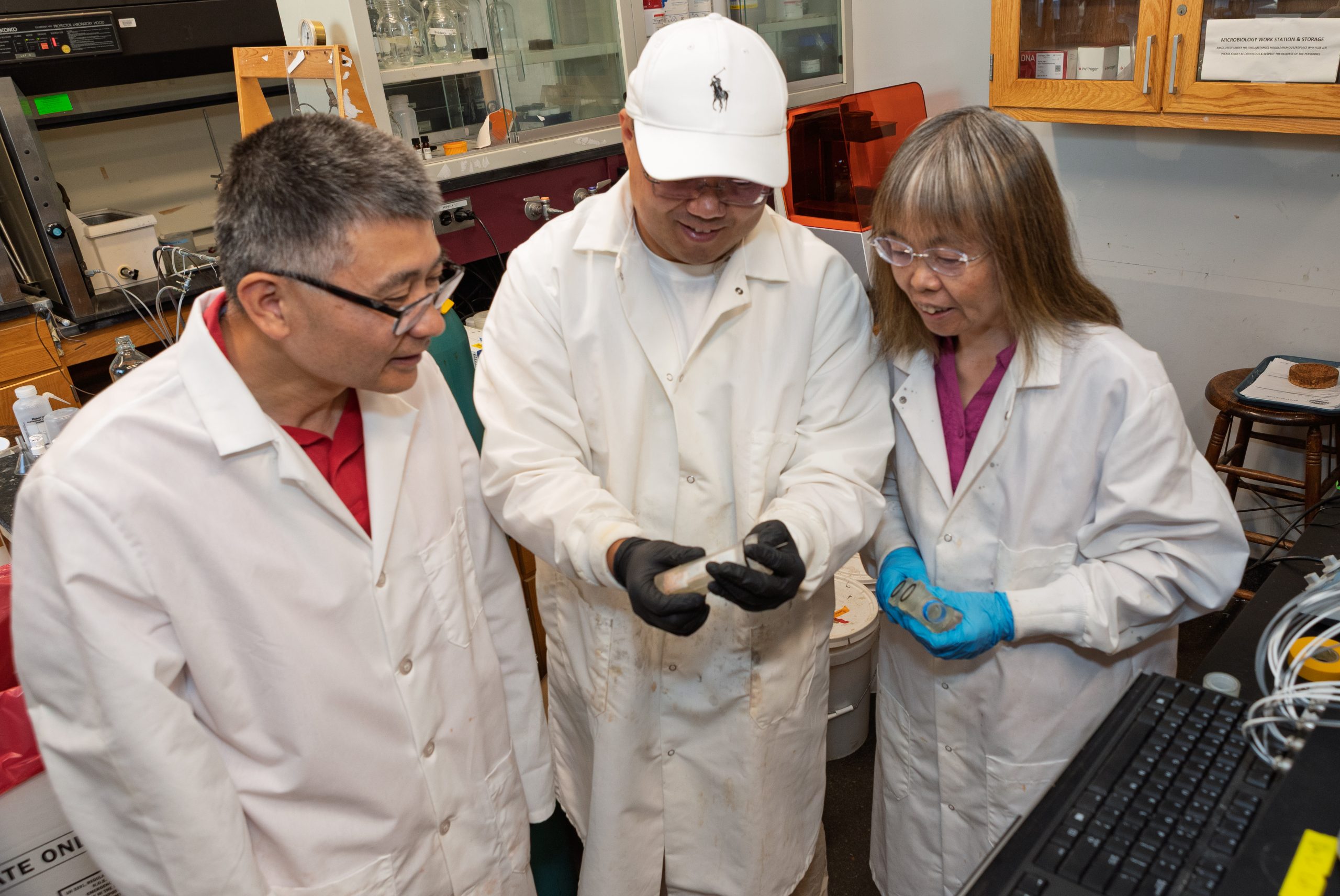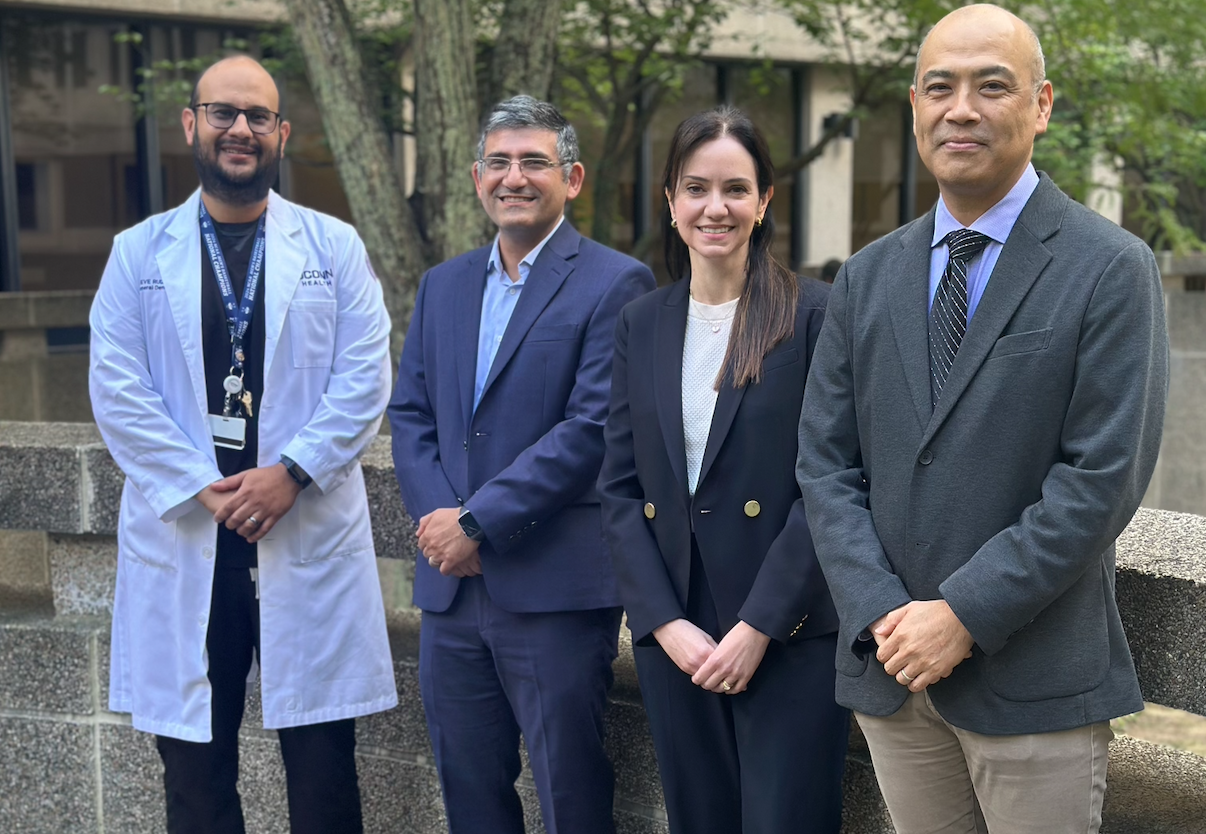AI in K-12 Education: Partners in Progress, Not Replacements
As artificial intelligence continues to transform industries worldwide, educators and researchers with the Neag School of Education are exploring how it might reshape teaching and learning. The Neag School’s annual Teaching and Learning with Technology Conference in May offered insights into AI’s promise and challenges in the classroom, including how AI can enhance creativity, personalize learning, and support teachers, while preserving the deeply human heart of education.
Timothy “TJ” Neville ’04 MA, ’18 MA, an instructional technology specialist with Farmington Public Schools who has over two decades of experience in education and technology and presented at the conference, emphasized that education remains fundamentally human. While AI is powerful, he insists it should be viewed as a partner, not a replacement, for teachers.
“Education has always been, and will remain, a deeply human endeavor,” Neville says. “AI offers an opportunity to elevate our practice — not to replace our expertise.”
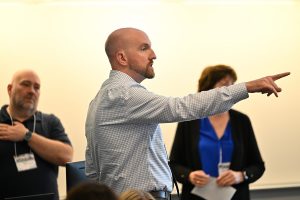
He encourages educators to see AI as a collaborative tool that can generate resources, manage routine tasks, and give teachers time to focus on what humans do best: building relationships and fostering deeper learning.
One of AI’s biggest strengths is helping teachers tailor learning to students’ diverse needs. For example, simple tools like student interest surveys combined with AI allow teachers to craft lessons that engage learners more personally. Neville’s district trains educators to use AI to create leveled readings, contextual vocabulary lists, and visual representations of complex texts.
“AI can help teachers address students’ readiness levels, interests, and learning profiles,” Neville says. “Teachers can quickly generate differentiated resources that remove barriers and make learning more accessible to all.”
Neville recalls a successful example from his district, where teachers used AI to support multilingual learners struggling with reading comprehension. By generating differentiated resources and visual aids, teachers could offer immediate, personalized help. This approach soon expanded to benefit all students, as well as led to further training for staff, showing how AI’s impact can ripple through an entire district..
“Teachers could respond in the moment,” Neville says. “If a student struggled with a text, a teacher could create a visualization instantly, helping them understand.”
Education has always been, and will remain, a deeply human endeavor. AI offers an opportunity to elevate our practice — not to replace our expertise. — Timothy 'TJ' Neville ’04 MA, ’18 MA
Shuyu Wang, a Neag School of Education doctoral student who presented at the conference, agrees. Drawing on her experience with an educational technology company in China, Wang describes how AI-powered platforms let students interact through tablets while software tracks engagement data. This helps teachers analyze learning behaviors and tailor support in real time. She believes personalized learning is one of AI’s most promising contributions, helping teachers spot learning gaps and save time.
“Teachers spend so much time creating materials for different students,” she says. “AI can automate parts of that, freeing teachers to connect emotionally and socially with students.”
Despite its benefits, AI in education comes with significant challenges. Neville highlights the need for clear guidance on transparency, privacy, and equity: “It’s crucial that students know if AI is being used to provide feedback. Transparency is essential.”
He warns against “cognitive offloading,” where students become too dependent on AI and fail to develop critical thinking skills. Wang shares similar concerns, particularly about how AI might increase pressure on students to chase perfection or its lack of emotional intelligence.
“AI can’t read emotions like teachers can,” she says. “If a student is upset, a teacher can see that and respond with care.”
Another challenge is bias. Both Neville and Wang stress that AI models are trained on human-created data — which means bias inevitably seeps in, regardless of which country the AI or its training data originated from. Wang believes educators and students must learn to think critically about AI outputs.
“We should read classic literature, news from different countries, and diverse perspectives,” she says. “Only then can we judge whether AI’s answers are trustworthy.”
AI’s ability to produce polished work quickly raises questions about traditional assessments. Neville believes educators should shift focus from final products to the learning process itself.
Teachers spend so much time creating materials for different students. AI can automate parts of that, freeing teachers to connect emotionally and socially with students. — Shuyu Wang, Neag School doctoral student
“We want assessments that capture how students think, problem-solve, and apply tools,” he says. “The goal is to help students become more self-aware and reflective.”
Wang echoes this sentiment. She believes AI can improve the efficiency of assessments but worries that it often overlooks the emotional effort students pour into their work.
“It’s unfair if we only look at outputs,” she says. “AI can’t measure the feelings and creativity people invest in what they create.”
Beyond helping students, Neville sees AI reshaping professional development for teachers. Tools like Edthena let teachers upload lesson videos for AI-driven analysis and feedback. Other platforms, like Swivl’s Mirror Talk, provide live feedback during instruction.
“AI can make professional development more personalized and practical,” Neville says. “It can tailor support to each educator’s needs.”
He envisions AI simulations where teachers get feedback from AI personas acting as students or supervisors, helping them practice real-world teaching scenarios. Wang believes the same strategies used to personalize student learning can enhance teacher training.
“In our training programs, the learning needs are the same,” she says. “AI can help teachers build portfolios, gather feedback, and get support tailored to them.”
Del Siegle, the Neag School’s Lynn and Ray Neag Chair for Gifted Education and Talent Development and organizer of the Teaching and Learning with Technology Conference, has explored how AI can help overcome creative roadblocks. For many, the biggest challenge in creative work is the fear of the blank page. Siegle believes AI offers a way past that paralysis.
“AI isn’t here to replace our imaginations but to partner with them,” Siegle wrote in Gifted Child Today.
AI isn’t here to replace our imaginations but to partner with them. — Del Siegle
Creativity, he notes, is vital for problem-solving and well-being. Students who engage creatively understand their learning more deeply and gain confidence. While AI can generate poems, images, and ideas, Siegle argues it’s not truly creative in the human sense — it lacks emotion, experience, and personal meaning. But it can still be a powerful tool to help us get started.
“Just make it exist first. You can make it good later,” Siegle says about the importance of overcoming perfectionism.
AI tools like Goblin.tools and MagicSchool.ai help students break big tasks into smaller steps. They can produce rough drafts that students later refine, easing anxiety about starting.
“AI can be the friendly assistant nudging us to take that first step,” Siegle says.
Some fear AI will stifle creativity, leaving students reliant on algorithms instead of thinking for themselves, but Siegle argues that AI often sparks more original ideas. One study he cites found that students using ChatGPT generated more unique ideas than those using traditional brainstorming. He envisions students defining creative problems — like designing science experiments or writing stories — while AI suggests new angles, helps organize ideas, and offers fresh perspectives. This collaboration, he believes, creates results neither humans nor AI could achieve alone.
As AI grows more capable, Siegle predicts it will transform the skills schools emphasize. Instead of memorizing facts, students will focus on creative thinking, connecting ideas across disciplines, and evaluating information critically. AI can help students at every level of creativity, Siegle says, from small personal projects to professional innovations. For everyday creators, AI offers a safe, judgment-free space to experiment without fear of failure. Wang agrees, stressing that AI should remain an assistant, not a replacement.
“Teachers bring empathy, flexibility, and human understanding that technology can’t replicate,” she says.
Neville echoes the same optimism, with caution: “AI can be an incredible tool. But it must always serve to enhance — not replace — the deeply human work at the heart of education.”
Latest UConn Today
- Rock Stars of Regenerative Engineering Symposium at the American Chemical Society ConferenceThe symposium, coordinated by ACS’s Division of Polymeric Materials Science and Engineering, highlights the Regenerative Engineering Society, founded by UConn's Dr. Cato T. Laurencin.
- UConn School of Nursing Hosts Annual Transitions to Clinical CeremonyThird-year nursing students embark on the second half of their nursing education.
- Diane W. Whitney ’85 JD Elected to UConn Board of TrusteesWhitney is set to serve a 4-year term
- Five UConn Law Faculty Members Honored with Named ProfessorshipsThese appointments celebrate individual contributions while affirming UConn Law’s dedication to shaping the future of law and justice.
- Smart Water Sensors Help Preserve Clean Water SuppliesA College of Engineering research team is developing smart sensors for monitoring municipal wastewater, soil and other treatments with more accuracy and stability than existing sensor technology
- School of Dental Medicine Announces Faculty PromotionsFour faculty members received promotions








